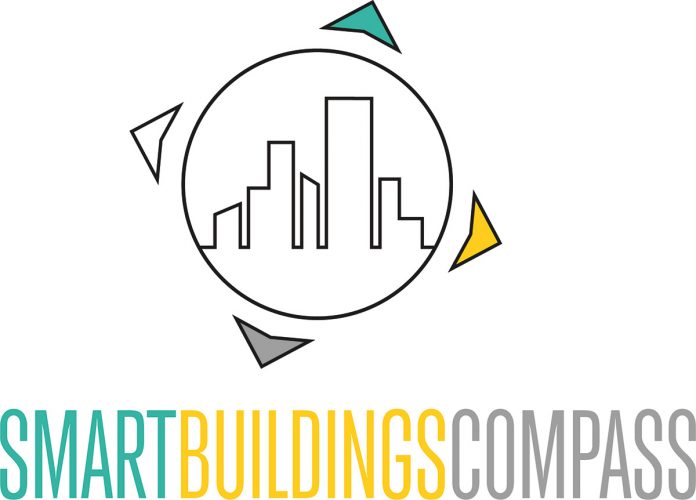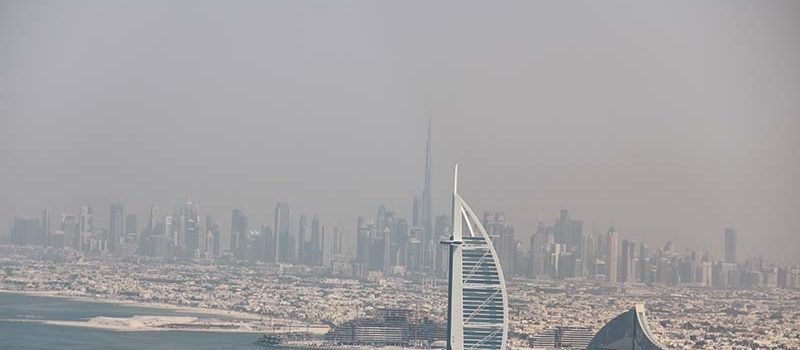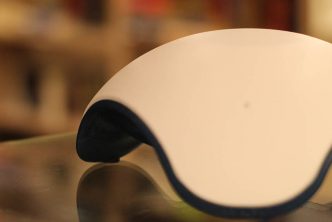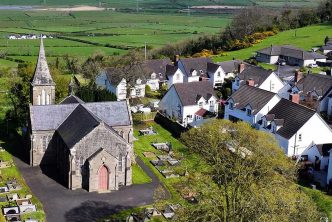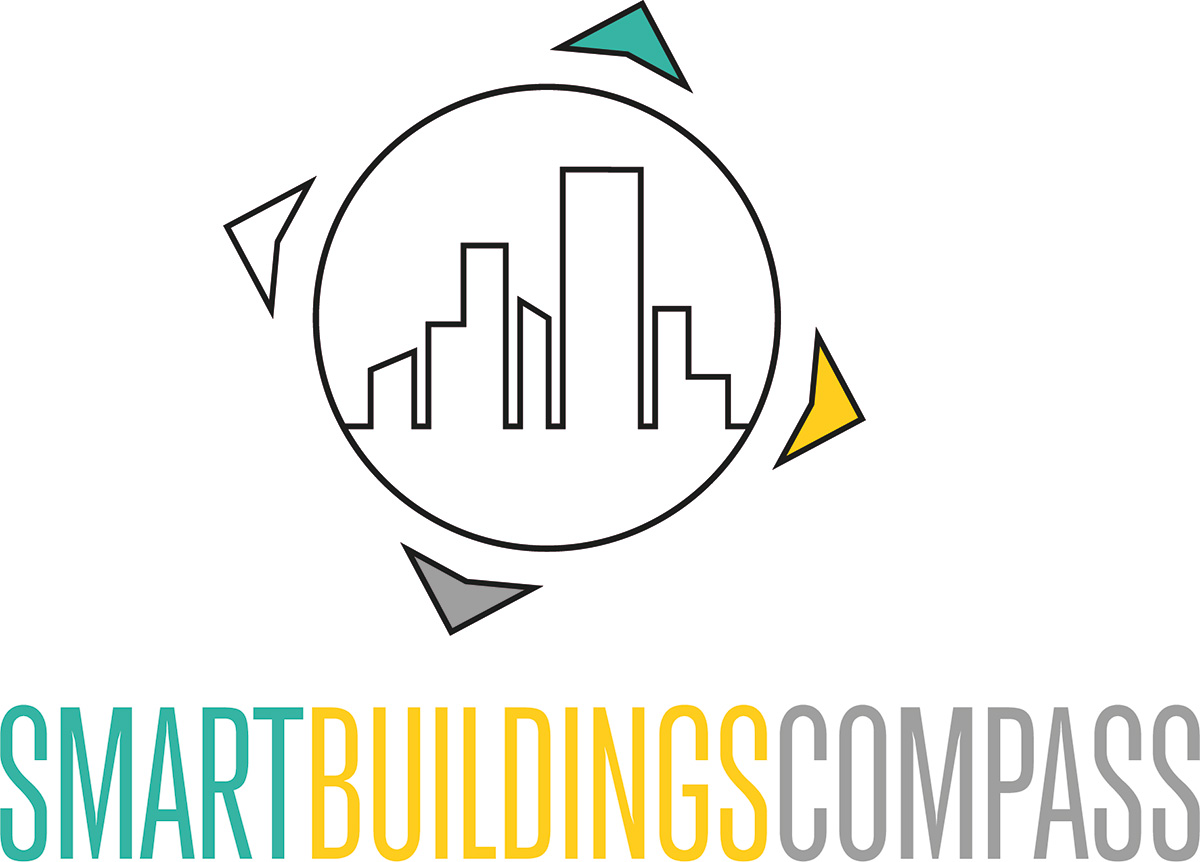What comes after oil?
The Arab Emirates must have been a “cradle of life” about 150 million years ago: During the time of the dinosaurs, a large part of the oil produced today was created, plants and organisms transformed in a slow process into black gold – the basis of the region’s current wealth.
The Emirate of Dubai will now be the first Arab country to invite visitors to EXPO 2020 until March 2022: Due to Covid, one year later than expected, the countries of this world will present their ideas for future visions and technologies under the motto “Connecting Minds, Creating the Future”.
In view of the necessary decarbonization of our society, the question of future technologies is a particularly exciting one – and it will be addressed, at least in part, in Dubai.
Impressive skyline of Dubai
Enormous growth
The growth of the Emirates is impressive: At the beginning of the 20th century, people lived from pearl diving. However, this business model came to an end when the cultured pearl was invented in Asia. Until 1950, Dubai and Abu Dhabi were still fishing towns, and it took until the 1960s for the rise of oil to begin – and with it the rise of the emirates. Incidentally, this federation was founded in 1971 by the merger of six emirates. The seventh emirate, Ras al-Khaimah, was added in 1972. On December 2, 2021, the federation celebrated its 50th anniversary with a grandiose ceremony.
The federation is the basis of their rapid economic success: They now have the fourth largest economy in the Middle East, and over the past five decades they have developed as a political and economic heavyweight alongside Saudi Arabia.
Because of their relatively short shared history, in many areas they do not have old structures that need to be reformed, rehabilitated and transformed. The cities are new, with modern structures. Dubai is considered the most cosmopolitan of all emirates, with about 3.5 million people living there today, depending on migration-related fluctuations. Nearly 90% of the people are foreigners, and these migrant workers provide most of the economic output. Natives represent a minority in their own country.
The enormous number of ethnic groups in the country shapes social life: The language is English, and even the traffic rules are adapted to the multicultural circumstances. For each set of traffic lights, cars drive in only one direction as a safety measure, and they also last longer – usually, after all, two directions are released.
Dubai Creek Harbour
Burj Khalifa
A new business model is needed
The Arab Emirates hold almost 10% of the world’s oil reserves, most of it in the federation’s richest emirate – Abu Dhabi. Dubai still profits from oil through the federation – but no longer has any reserves itself.
Due to global decarbonization, i.e. the slow phase-out of oil, the emirates have to reinvent themselves in order to be able to prolong this wealth into the future. In this reorientation, Dubai has had to act particularly quickly: While Abu Dhabi can live for several more decades on oil, Dubai has never been able to rely on as many oil reserves as them. The few offshore oil fields were empty around 2010. Since then, the motto has been diversification: In addition to tourism, the emirate invented itself in the role of real estate giant, financial center and hub to and from Africa.
Along the coast, one skyscraper after another is lined up, with “The Palm Jumeirah” Dubai doubled its coast length by sand fillings and generated a fortune with the sale of these properties. There are rumors that Dubai wants to allow gambling in the hotels of the “Palm” – actually forbidden in Islam. We can be curious to see how the Arab economic area reacts to this potential opening. The construction of another Palm was thwarted by the world economic crisis.
Sand playground for adults
The project “The World”, a map of the world formed from 270 islands made of compacted sand off the coast of Dubai, seems a little crazy. By the way, the sand piles were implemented by Dutch companies with the help of GPS technology. Austria’ and ‘Germany’ were bought by an Austrian real estate agent, the former FPÖ politician Josef Kleindienst. The investments for these future tourist paradises are very high: Even for electricity, water, sewage, etc. the buyers must provide themselves. There is no connection to a public network. Due to erosion, the islands have to be maintained at great expense.
The construction of “Jumeirah” and “The World” was met with much criticism: This was a nightmare for the natural marine flora and fauna, increased turbidity and altered the natural sediment transport along the coast. At the same time, however, “Jumeirah” created habitat along rocky breakwaters and in lagoons.
Dubai is only now ramping up again after the pandemic, so tourism must first be revived. The skilled personnel is again fetched from abroad.
While the world is regularly introduced to new superlative construction projects, the work behind them is done by people who have only limited rights in the Emirates: In addition to migrant workers from Europe, the United States and Canada, primarily young men are recruited from countries such as India, Pakistan, Bangladesh and Sri Lanka for low-skilled work in the highly developed real estate sector. They live in house complexes outside the city and are taken by bus to the construction sites every day. The inhumane working conditions are often accepted by the workers: Despite the inhumane conditions, they earn more in the Emirates than they do at home. However, the reports of the human rights organizations Amnesty International and Human Rights Watch show the circumstances in which the workers have to labor on the construction sites.
with "The Palm Jumeirah" Dubai doubled its coast length and generated a fortune with the sale of these properties.
Houses line up on the "palm leaves", exclusive properties with buyers from over 70 countries.
Taste is debatable: A bright pink hotel on the Palm
Bigger, greater, more impressive
As a very young federation, there are no old structures on site – everything is new, modern. Therefore, there are no culturally sophisticated, historic buildings, such as in Vienna along the Ringstrasse. Instead, there is almost nothing that has not been copied from anywhere in the world: World Trade Center, Louvre or aqua parks, Legoland or “Riesenrad”. In the Emirates, there are modern copies of these, larger and preferably more impressive than the original. There’s even no need to miss out on skiing in Dubai; in an indoor ski slope, skiers can wobble down a slope at an outside temperature of 35 degrees.
These spots are not only meant to be tourist attractions, but also to signal: We are part of the world stage. Another mega-project is currently under construction: The “Dubai Creek Tower” is intended to keep the title of the world’s tallest building in Dubai. According to reports, the building will be at least 1,000 meters high.
The path to new business models is not always that simple, not every concept is successful. Paper is patient, the world is dynamic. It was Abu Dhabi that repeatedly bailed out Dubai financially with an cash injection after the Lehman Brothers bankruptcy, during the global economic crisis and during the pandemic. In return, by the way, the world’s tallest building was no longer called “Burj Dubai” (Tower of Dubai) – but “Burj Khalifa” after the ruler of Abu Dhabi, Sheikh Khalifa bin Zayed Al Nahyan. According to an interviewee, this understandably caused not only waves of enthusiasm in Dubai.
Despite the contradictions and questionable business models, the Arab Emirates are worth a visit. There is no question that it is impressive to see the energy and strength is being invested to prepare the Emirates for life after the era oft the black gold of oil.
